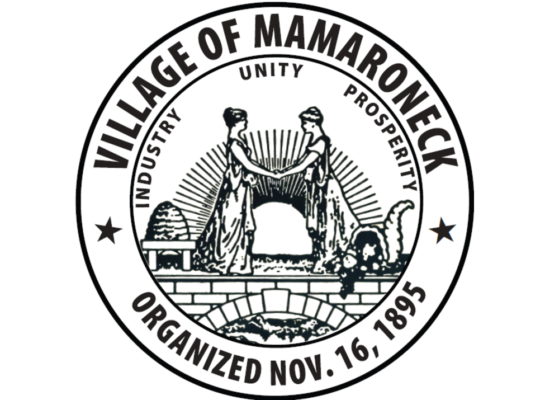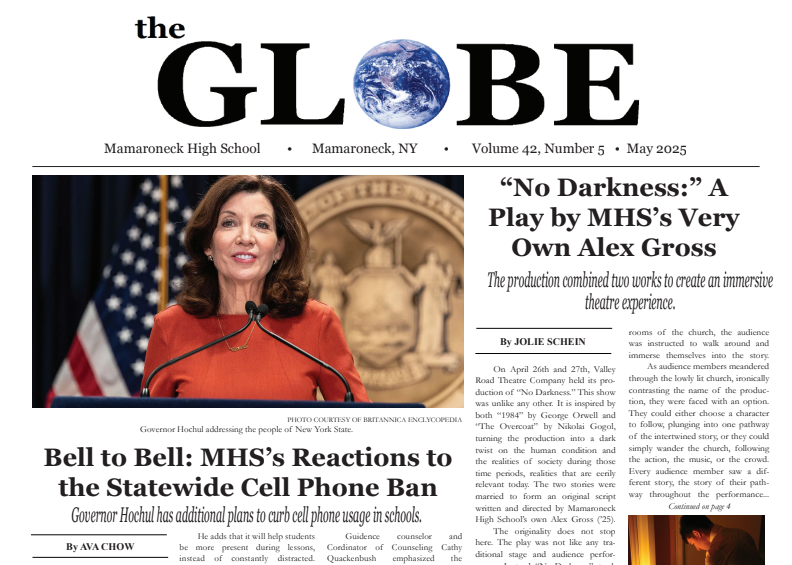Village of Mamaroneck Receives Clean Energy Grant
The New York State Energy Research Department awards the Village $10,000 in grants for greenhouse gas emission reduction.

Photo Courtesy of the Larchmont Loop
Mamaroneck Village Seal depicts the natural beauty of the community.
February 28, 2022
At the end of December 2021, the Village of Mamaroneck was awarded two $5,000 grants by the New York State Energy Research and Development Authority (NYSERDA) under the Clean Energy Communities Program (CECP). These grants earned from CECP are being used to address the much-needed reduction of greenhouse gas emissions. It will also aid village residents in cutting back on energy costs while addressing the prominent issue of climate change.
Doreen Harris, NYSERDA CEO posited, “The impacts of climate change are all too familiar in the Village of Mamaroneck, but the Village is putting in the work to build a more sustainable community and is setting a great example for others. We applaud the Village for its ongoing commitment and leadership in embracing clean energy, reducing harmful emissions, and building a greener future.”
The Village carried out two initiatives; one is a solar initiative (from Community Solar) meant to allow customers to connect to renewable energy sources, such as solar power. The other program is GridRewards, a free app that connects individuals to their ConEd electricity usage and enables them to receive cash rewards for reductions in electricity usage (this allows for a reduction in consumption of energy during “peak energy periods”). The initiatives tackled by the grant were woven into the objectives of Mamaroneck’s Committee for the Environment.
“Our committee worked hard to achieve the targets of these programs set by NYSERDA and we will continue our efforts to improve the environment and help reduce greenhouse gas emissions,” said Ellen Silver, Chairperson of the Committee for the Environment.
The next phase of the CECP, announced in January of 2021, is a $17 million Clean Energy Communities (CEC) Leadership Round, where the community will be eligible for a larger grant amount to fund additional clean energy projects. The CEC is a program that invites local government employees to set clean energy goals and access necessary resources and assistance. This “leadership round” supports the local governments by introducing grants that would support the creation of energy development programs. This large achievement by the Village of Mamaroneck will reduce the NYS’s alliance on fossil fuels while also spreading further energy goals within the town.
Tom Murphy, Mayor of the Village of Mamaroneck said, “We are excited to put the grant money to work by purchasing LED light bulbs and giving them away to residents, particularly to our low to moderate-income residents who suffered damage from Hurricane Ida, and to purchase electric lawn maintenance equipment for use by the Village Parks and Recreation Department.”
MHS students agree that the grant has allowed for further action towards turning the community greener. Alessandra Hintz (‘22), president of the MHS club EcoReps, declares, “The town has a great community of climate advocates which is reflected in our active organizations beginning as early as the Green Tigers clubs [organizations in the elementary schools].” Hintz explains that Mamaroneck’s Committee for the Environment has allocated grant money to purchase electric lawn maintenance equipment and buy LED lights for residents, decisions which she thinks are ‘practical ways to address our impact on the environment.” She continues to mention how beneficial the new ban on gas-powered leaf blowers, which has shifted the community to the use of electric leaf blowers has been for the environment. “The implementation of such measures is encouraging, and come those seasons, I think we will get to appreciate the impact of the residents’ advocacy,” Hintz adds.
Moving forward, the Village of Mamaroneck hopes to pass initiatives focused on the reduction of greenhouse gasses, with the aim of meeting New York state’s 70% renewable energy goal by 2030.





